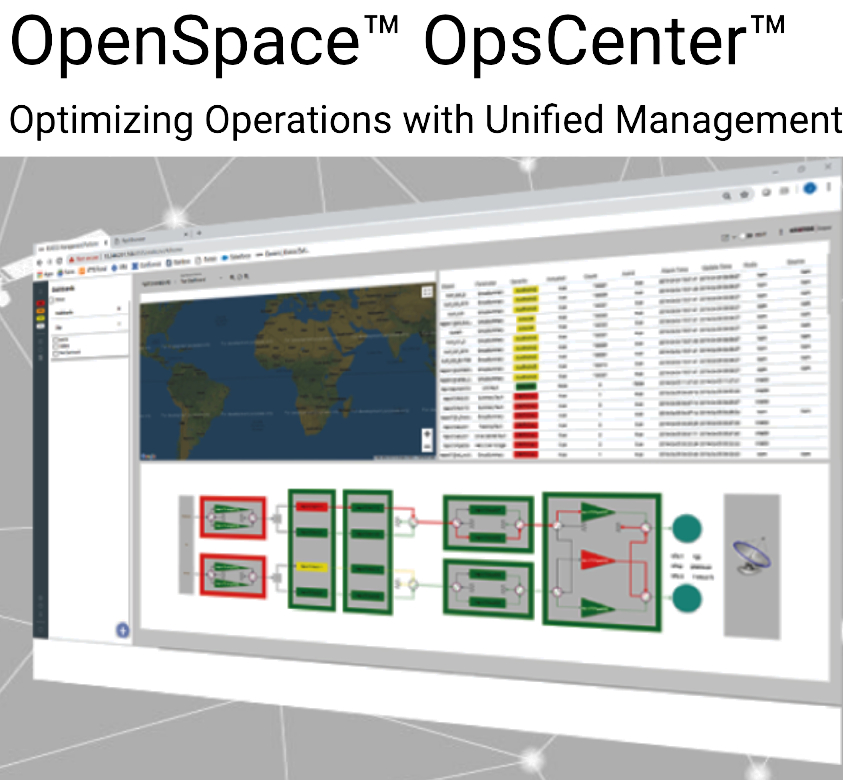
Kratos Defense & Security Solutions, Inc. (Nasdaq: KTOS) has launched their OpenSpace™ Wideband Software Receiver supporting the high data rates, scalability and interoperability needs of today’s Earth Observation (EO) and Remote Sensing missions.

As more and more data is being beamed from satellites, the infrastructure on the ground must become highly flexible and more cost-effective to address the key challenge of EO applications – the need to rapidly download data on the fly during the short time periods when satellites are over the ground station.
Kratos’ OpenSpace Wideband Software Receiver is the only completely virtual receiver with no Field Programmable Gate Array (FPGA) or Graphics Processing Unit (GPU). The software receiver takes advantage of virtual and cloud-based architectures and runs on standard x86 servers.
The OpenSpace Wideband Software Receiver offers 600 Mbps of throughput to support downlinks across several hundred MHz of instantaneous bandwidth, an unmatched level of signal processing in software. The performance of the OpenSpace Wideband Software Receiver is equivalent to hardware based EO and remote sensing receivers in the market. Unlike traditional EO and remote sensing hardware that is proprietary and purpose built, the software-only receiver easily scales based on demand and embraces open standards including VITA 49 and CCSDS.
Leveraging technology used in Kratos’ quantumRadio narrowband software receiver that supports tens of thousands of satellite passes per month, the OpenSpace Wideband Software Receiver offers the same virtual capabilities running on commodity compute resources, but with support for much wider bandwidths.
The OpenSpace Wideband Software Receiver provides elastic demand with virtual instances to meet customer and changing mission needs. Virtual deployment of the software receiver enables government and commercial EO satellite operators to lower costs by using fewer proprietary and purpose-built hardware devices.
Kratos offers satellite operators and Ground Station as a Service (GSaaS) providers the ability to virtualize their infrastructure for EO and remote sensing service chains. After digitizing the RF at the antenna using Kratos’ SpectralNet Wideband product, the digital stream is processed by the OpenSpace Wideband Software Receiver and the quantumDRA, Kratos’ digital recording application, which stores the data for playback or streaming in real-time.
Executive Comments
According to John Heskett, CTO at Kongsberg Satellite Services (KSAT), “Our KSATlite global network takes advantage of a virtualized infrastructure including Kratos’ narrowband software receiver, quantumRadio, to scale on demand delivering end-to-end services for customers. One gap that we have had in going fully virtualized is in our wideband demodulation and forward error correction signal processing which has been limited by the use of traditional hardware solutions that do not support virtualization. The OpenSpace Wideband Software Receiver offers the opportunity for us to move to a fully virtualized environment and to increase flexibility and resiliency in our operations.”
“The OpenSpace Wideband Software Receiver dynamically adapts to meet the needs of EO and remote sensing data processing ground stations,” explains Chris Carlstrom, Product Manager for Kratos. “The software receiver uses an all-digital processing chain optimized for performance and pass-to-pass configurability. It also easily fits into existing ground architectures and can be deployed on bare metal, virtual instances or in the cloud.”
